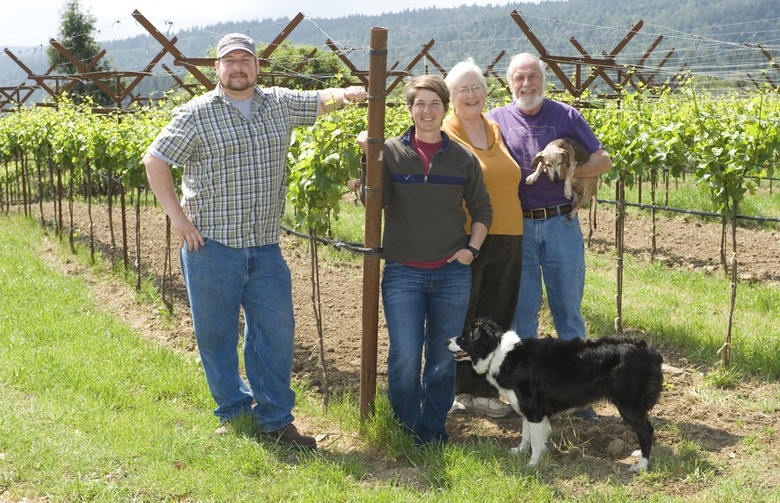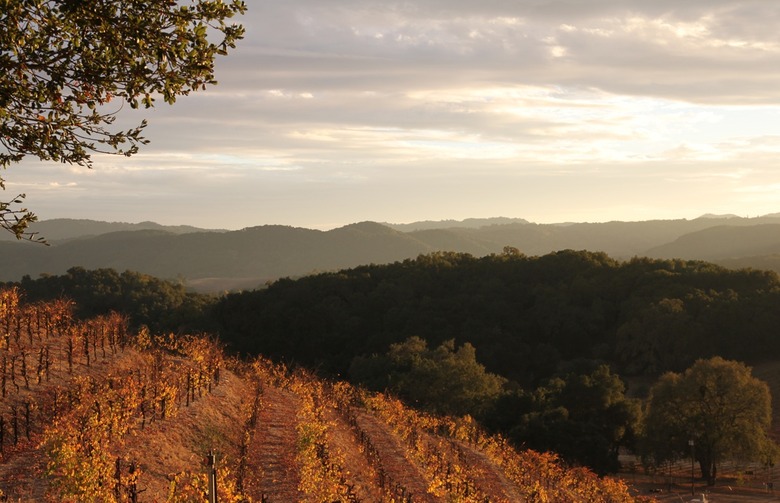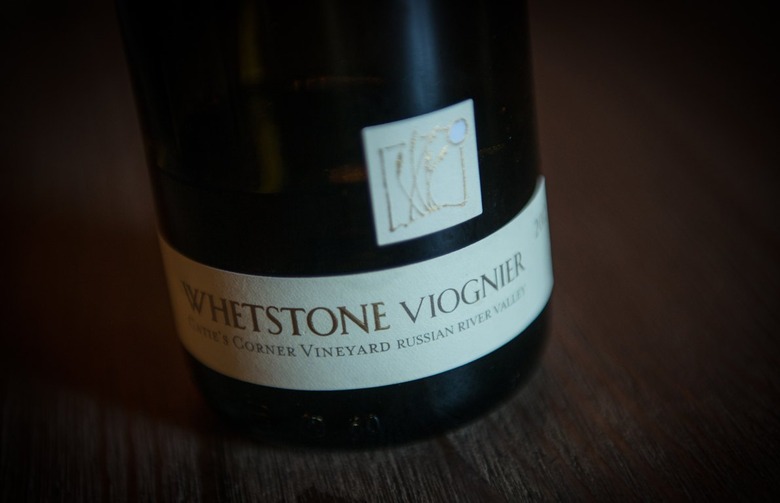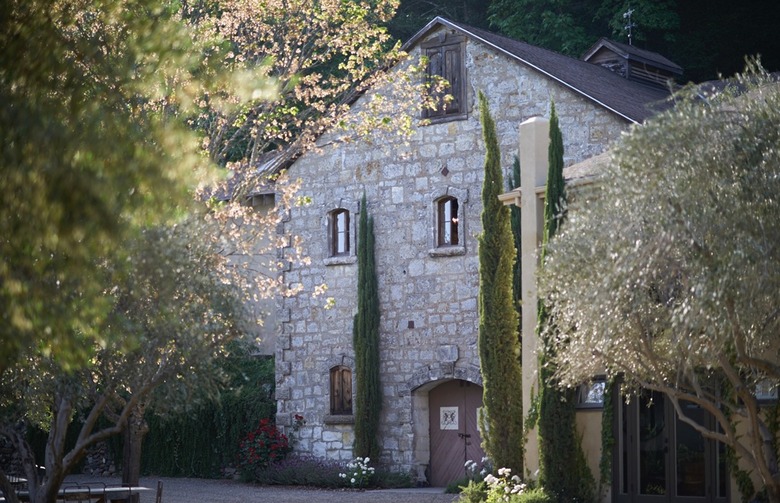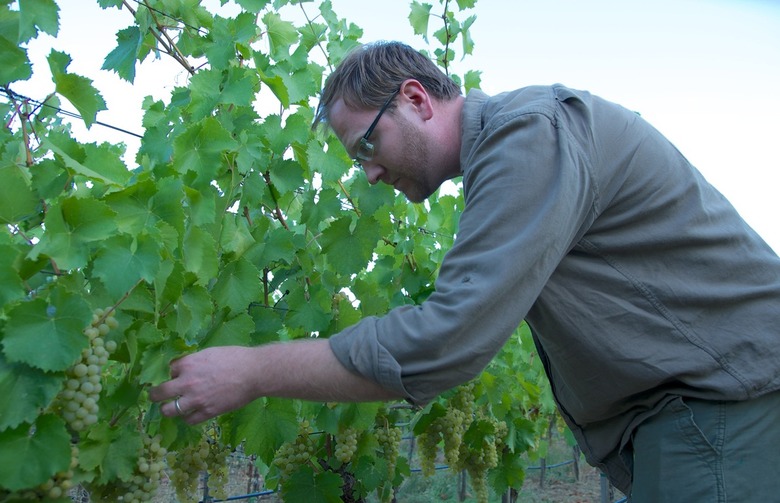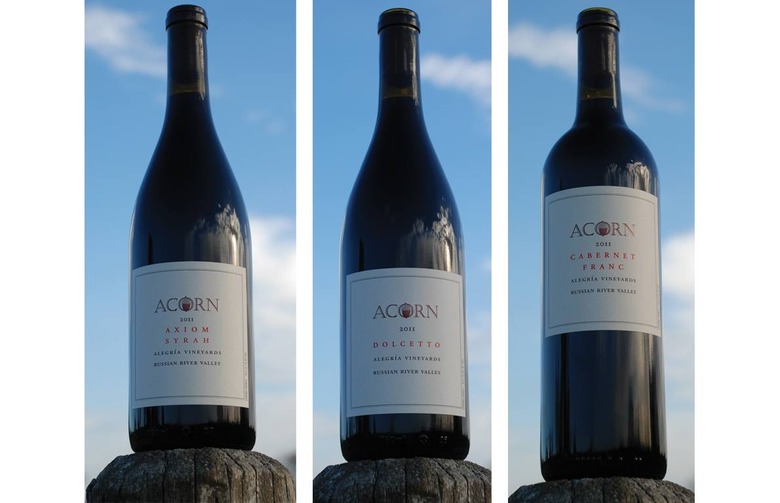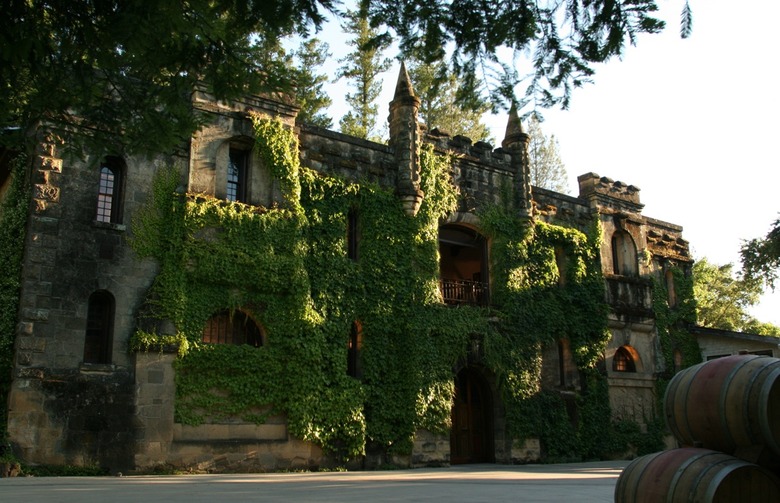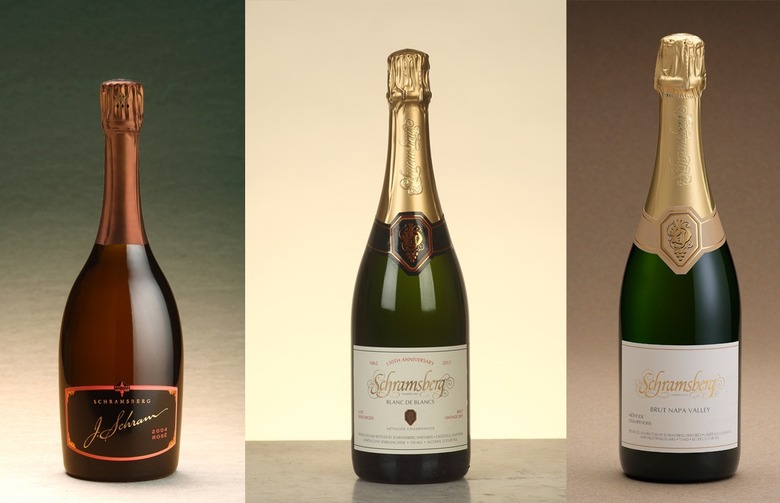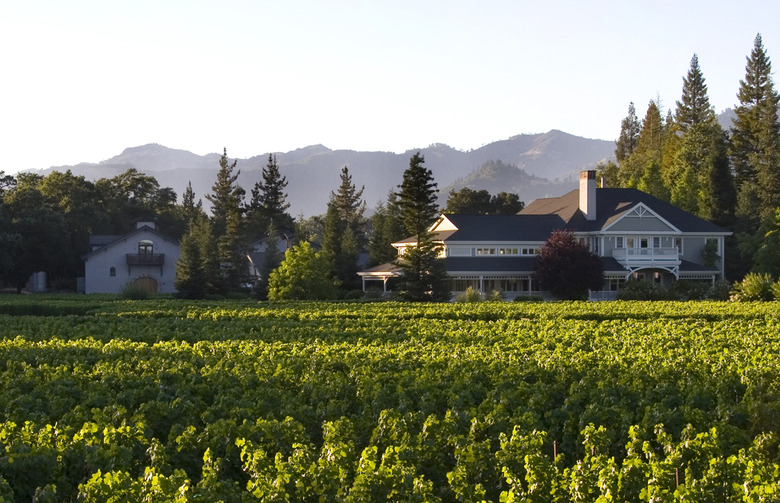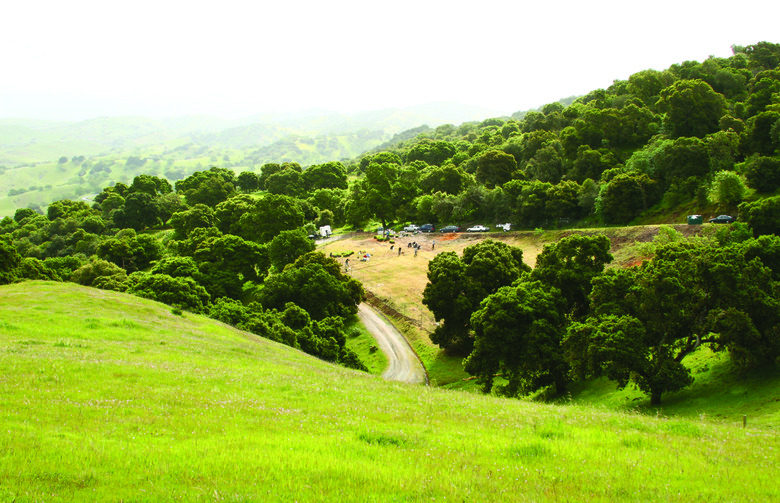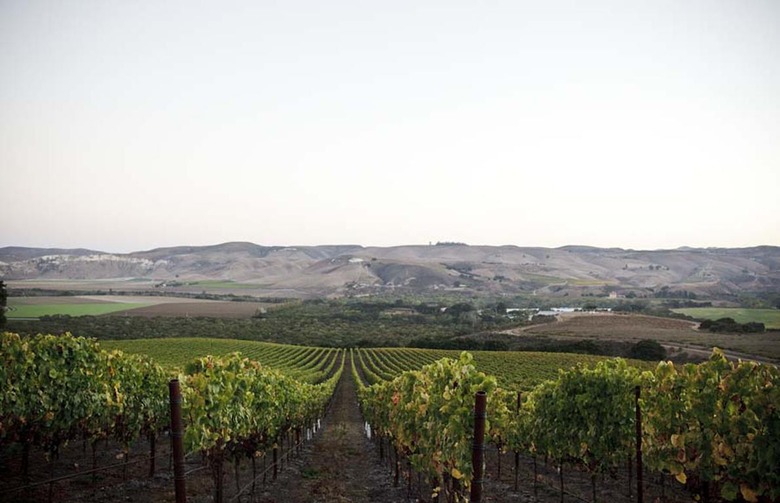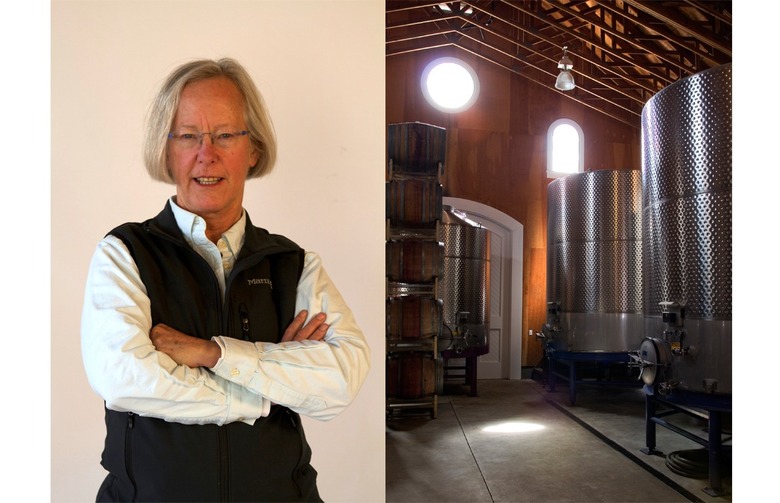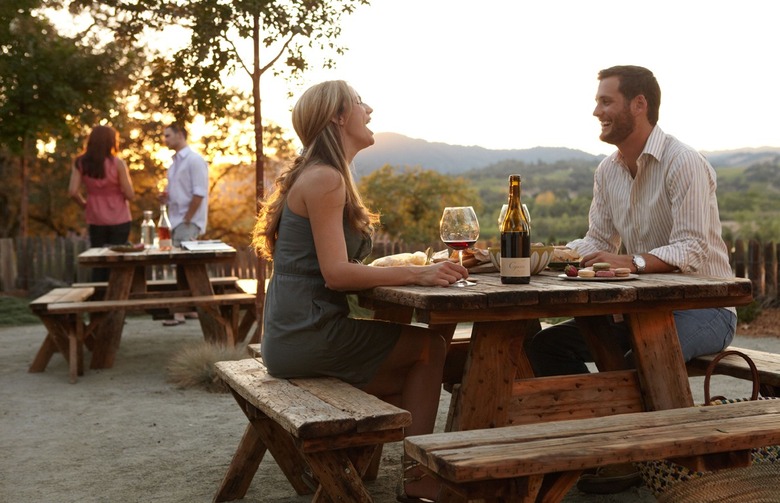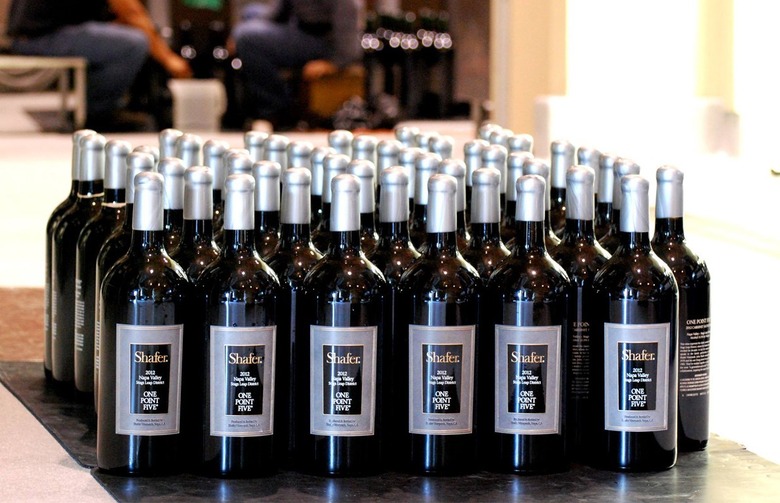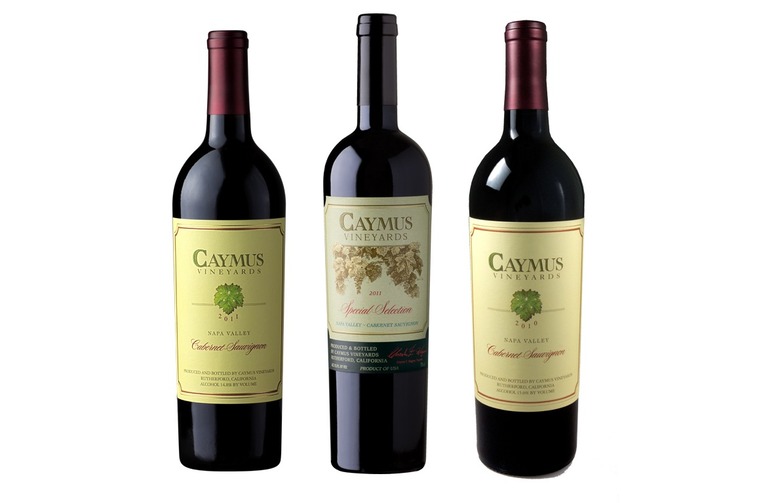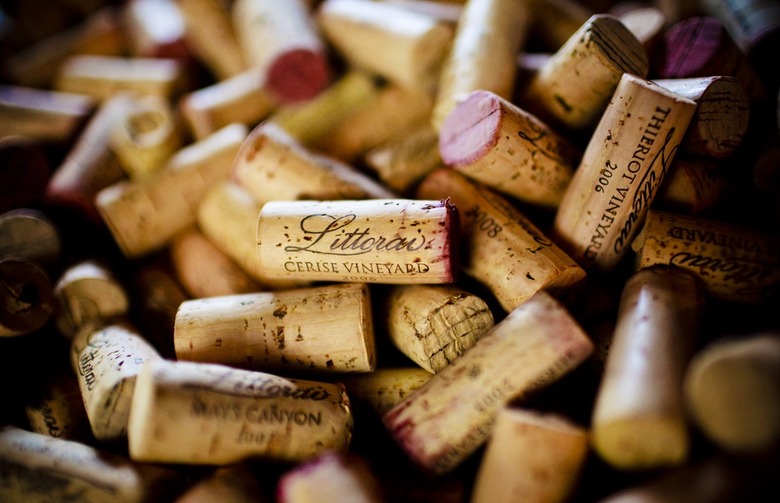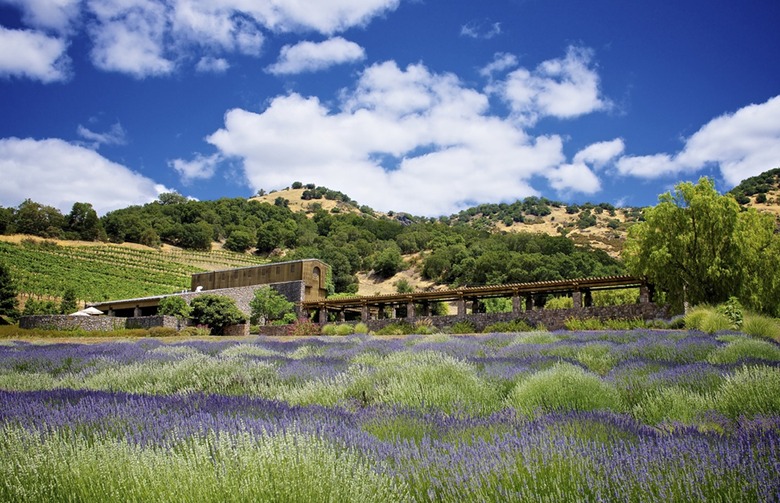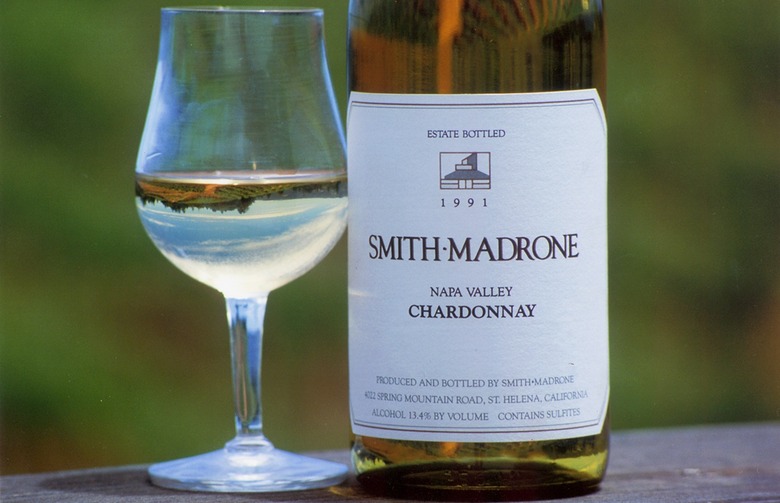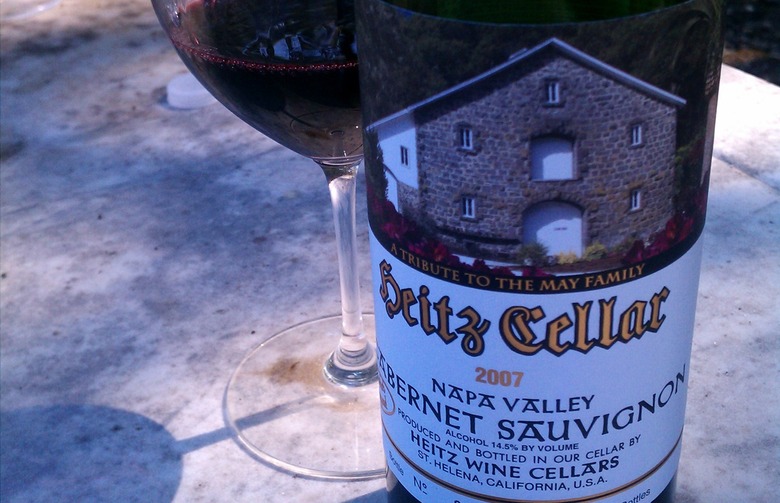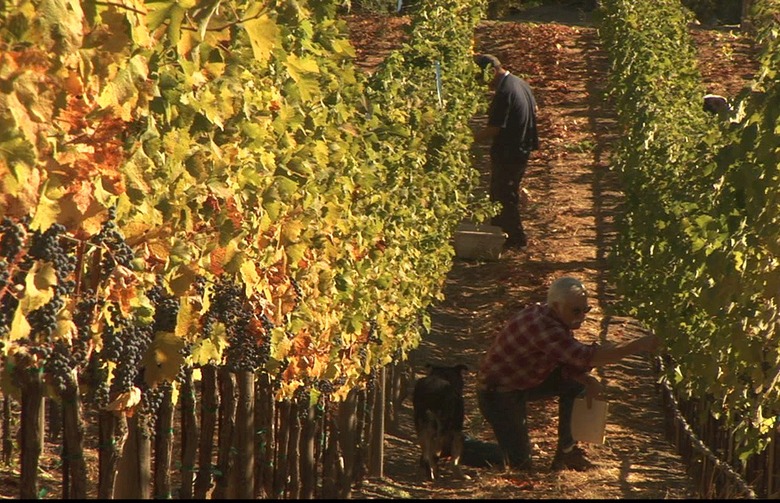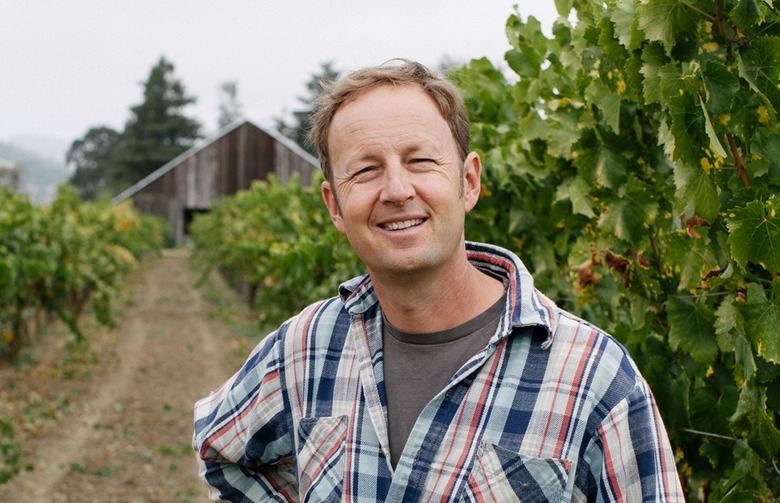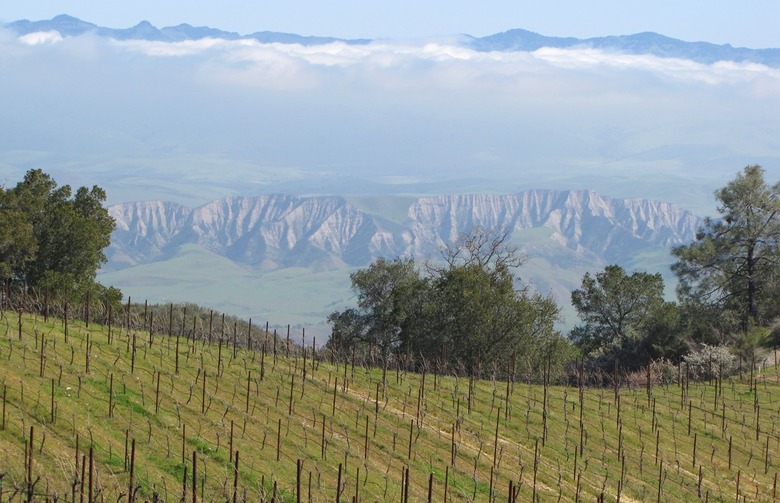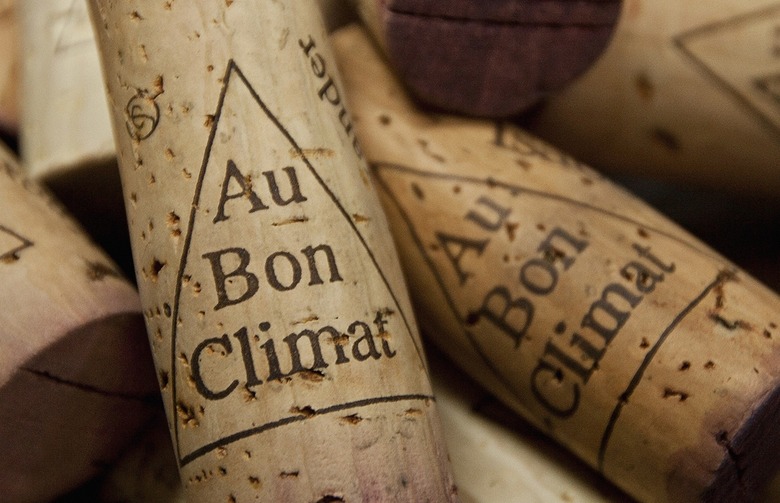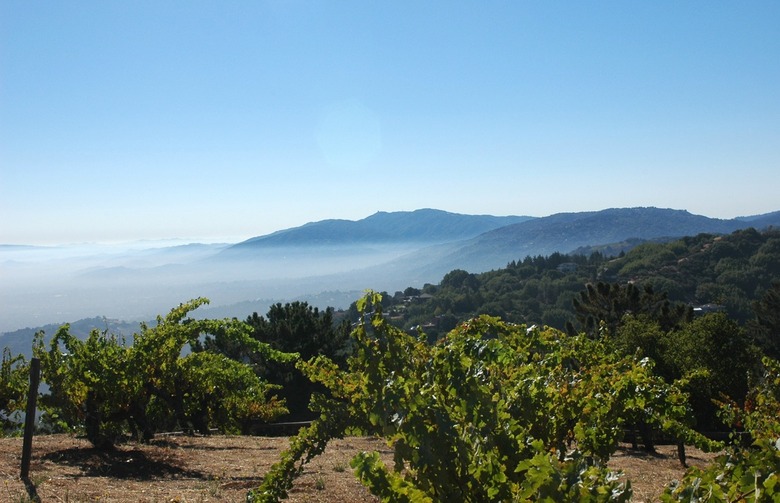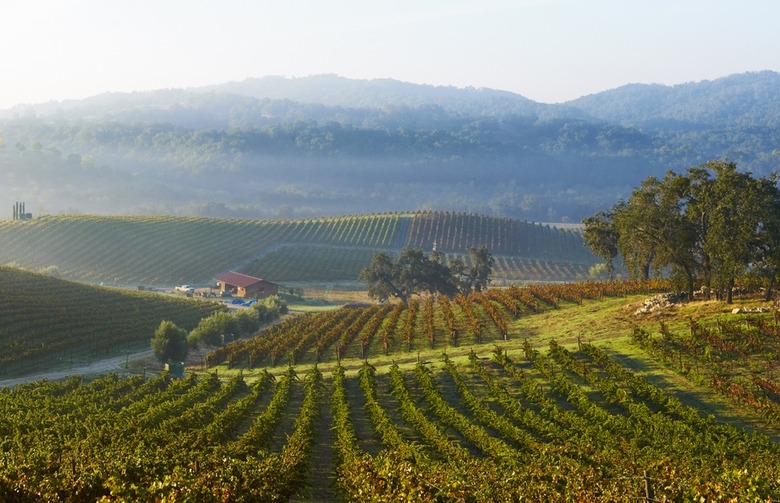The 25 Best Wineries In California Slideshow
Wine is now made — from grapes — in all 50 states (though Alaskan vintners admittedly have to import their fruit or its juice), and we specifically asked our panelists to consider wines from all over, not just from the usual places, so that we could at least partially reflect the broad scope of American winemaking today.
That said, when the must settled, our results verified what we'd really known all along: California is our nation's wine capital, and the Napa Valley is at the heart of that state's quality wine industry.
In gleaning this list of the 25 Best Wineries in California from our larger list, we didn't have to go very far: 25 of the top 30 producers were Californian. Of those, 14 call the Napa Valley home. The state's Central Coast, from Santa Cruz south to Santa Barbara, accounts for another seven. Sonoma County, to our surprise, fielded only three wineries in the top 25 (the one outlier was from Philo, in Mendocino County).
The wineries on our master list were nominated by dozens of sommeliers, wine writers, chefs, and restaurateurs, along with wine-savvy editors at The Daily Meal. Some respondents asked to remain anonymous, but among those who didn't were regular Daily Meal wine writers Roger Morris, Gabe Sasso, and Andrew Chalk; John Tilson of The Underground Wine Letter; wine writer and wine bar proprietor Keith Beavers; chef–restaurateur Daniel Boulud and Daniel Johannes, corporate wine director for Boulud's Dinex Group; chef–restaurateur and Daily Meal contributor Norman Van Aken; sommelier, wine educator, and wine blogger Elizabeth Schneider; Cathy Mantuano, wine director at the Chicago Art Institute's Terzo Piano; and Julian Mayor, head sommelier at Bourbon Steak in the Washington, D.C., Four Seasons Hotel. We also factored in our own tasting notes of recent vintages, consulted leading wine publications and newsletters, and considered recent awards from prestigious competitions.
We asked our panelists to judge wineries not on individual wines, but on the overall place of each property on the American wine scene. Is it a dependable veteran, tried and true? An audacious innovator? Does it specialize in just one or two grape varieties, or do a sterling job with 20? Is it representative of its corner of the wine country? Does it help, in one way or another, enhance the reputation of its region, and/or of American wine in general? We also factored in quality-to-price ratio. While this wasn't our principal criterion, we did feel that value should be considered in our ranking strategy. Value doesn't necessarily mean low price, of course, so there are some producers of pricey wines represented here. But our consideration of value accounts in part for the absence from our list of some of famous "trophy wines" from the Napa Valley and elsewhere, wines priced at many hundreds of dollars on release and bought more often (we're pretty sure) as status symbols rather than as delicious things to savor — though it is also worth noting that our panel didn't vote for some of the most famous names at all.
Here, then, drawn from our 101 Best Wineries in America, is our ranking of the 25 Best Wineries in California.
#25 Navarro Vineyards and Winery, Philo
"Ask folks in Sonoma what their favorite winery in the area is and many of them will tell you to head to Philo in Mendocino County and visit Navarro," sommelier, wine educator, and wine blogger Elizabeth Schneider told us last year. Navarro virtually owns gewürztraminer in California these days, making a dry, intensely aromatic, bright and clean example that can stand up to its Alsatian inspirations quite nicely, as well as some of California's best zinfandel (it has won a gold medal and best in class designation from the Zinfandel Producers of America) and excellent chardonnays and pinot noirs — including an unusually good pinot noir rosé. Prices are modest and, notes Schneider, "The best part: they regularly offer penny shipping to those of us who have to order rather than visit the winery!"
#24 Saxum Vineyards, Paso Robles
Young Justin Smith launched his winery in 2002 on a family-owned hillside vineyard that had to have terraces carved out of rock which had once been ocean bed; fossilized whale bones uncovered in the process gives testimony to this geological provenance. Smith's wines were almost an immediate critical success. Today he produces 4,000 to 5,000 cases of red Rhône varietals annually — grenache, mourvèdre, and syrah — both single varietals and blends. Try his 2012 James Berry Vineyard Bone Rock Syrah (the name is a reference to those whale remains), which is dense and delicious — if you're fortunate enough to find a bottle.
#23 Whetstone Wine Cellars, Napa
Whetstone is worth a visit for its gorgeous French-style château (built in 1885 by Hamden W. Mcintyre — an early proponent of gravity flow vineyard design), but has earned a place on this list for its lovely wines. Small and family-owned and -operated (winemaker Jamey Whetstone apprenticed at Turley Wine Cellers, then worked briefly at Domaine Dujac in Morey St. Denis, in Burgundy), Whetstone produces both Sonoma Coast and Russian River pinot noir, Napa Valley syrah. and Russian River viognier, among other wines. They're seamless, beautifully balanced wines combining elegance and authority.
#22 Mayacamas Vineyards, Napa
The Mayacamas Mountains separate Napa and Sonoma; they're also the site of some spectacular vineyard sites. Charles and Ali Banks purchased the winery, with its 125-year history, in 2013, with a goal of crafting well-regarded mountain wines based primarily on cabernet sauvignon and chardonnay, long the winery's signature varietals. (There are also smaller quantities of sauvignon blanc, merlot, and pinot noir.) Mayacamas remains a Napa Valley classic. As chef–restaurateur Norman Van Aken puts it, "Timeless and true to a destiny, Mayacamas wines today express the ineffable character of mountain fruit and artisanal care."
#21 Massican Winery, Calistoga
Massican takes its name from Monte Massico, a coastal mountain in Campania, in southern Italy, where Bacchus himself reportedly once hung out — but the inspiration for its wines comes from the north, from wineries in the Friuli region. Just half a dozen years into his winemaking journey, Brooklyn-born winemaker Dan Petroski has already received a ton of praise for his wines, all of them white: a sauvignon blanc and a chardonnay of great quality, a racy blend of Italy's greco and pinot grigio, and a wine called Annia, which combines tocai friulano, ribolla gialla, and chardonnay to memorable effect.
#20 Acorn Winery, Healdsburg
Betsy and Bill Nachbaur, owners of this sustainably farmed Sonoma County winery, release estate-grown wines from a portfolio that includes syrah and award-winning zinfandel, one of California's better sangioveses and an unusual dolcetto, and also some unique field blends (made from grapes that grow together in a single vineyard and are harvested and fermented together). The one called simply Acorn Hill is a Rhône–Tuscany melange, at least in the 2010 vintage, made up mostly of syrah and sangiovese but with tiny portions of viognier, canaiolo, and mammolo. Another field blend, the 2011 Medley, exuberantly combines syrah, zinfandel, alicante bouschet, cinsaut, muscat, dolcetto, petite sirah, and "other varieties. "Outstanding, affordable, different," enthuses sommelier, wine educator, and wine blogger Elizabeth Schneider. "You can't ask for more!"
#19 Château Montelena Winery, Calistoga
Chateau Montelena's 1973 chardonnay that bested four famous white Burgundies and five of its fellow Californians to win top honors in the legendary 1976 "Judgment of Paris," pitting California chardonnays and cabernets against their counterparts from Burgundy and Bordeaux. The event had an electrifying effect on the international wine trade and earned the Golden State's wines their first real respect in France and beyond. As sommelier, wine educator, and wine blogger Elizabeth Schneider has so eloquently put it, "That's Montelena's unbelievably positive and wonderful legacy — making California a legit wine region — and they continue the tradition today. Based in Calistoga at the northern end of Napa in a giant castle, the winery is owned by the Barrett family, who could be snobby and exclusive, but instead they are true wine lovers who chase quality, balance, and a lighter touch in their wines above all else. You won't really find fruit bombs here or wines with alcohol levels off the charts. Just balanced, beautiful, spicy, flavorful reds and whites."
#18 Schramsberg Vineyards, Calistoga
When wine-lovers talk of California sparkling wine — and despite the other fine producers in the state, including several launched by the great French Champagne houses — it is Schramsberg that they talk of first and foremost. There has been a winery on the spot since Jacob Schram founded one in 1862, but it was the purchase of the property in 1965 by Jack and Jamie Davies that made it a vital player in the modern California wine game. The wines are impeccable — lively, fresh, and complex — and have won countless awards and other honors (Richard Nixon and Chou Enlai toasted peace between their nations with a '69 Schramsberg Blanc de Blanc in Beijing in 1972). In recent years, the winery has added cabernet sauvignons and pinot noirs under the J. Davies Estate and Davies Vineyards labels, proving that their only expertise isn't with sparklers.
#17 Duckhorn Vineyards, St. Helena
In a region dominated by cabernet sauvignon, Duckhorn Vineyards bucked the trend and made a special commitment to merlot, inspired by co-founder Dan Duckhorn's love of the grape. With his then-wife, Margaret Duckhorn, he established the winery in 1976, and now produces single-vineyard, single-varietal wines from Bordeaux varietals, especially merlot, but also cabernet sauvignon, and sauvignon blanc. The wines are crafted with excellence and express the specific terroirs of each vineyard site. Since its tightly focused early years, Duckhorn has taken flight, now producing wine under five other labels: Paraduxx ("bold and expressive Napa Valley blends"), Goldeneye (Alexander Valley wines, including a brut rosé sparkler), Migration (chardonnays and pinot noirs from around California), Decoy (a range of "ready-upon-release" varietals from both estate vineyards and other sources), and Canvasback (cabernet sauvignon from Washington State).
#16 Bonny Doon Vineyard, Santa Cruz
For the Rhône-ish at heart, the annual release of a new batch of wines from Randall Grahm — the original "Rhône Ranger" — is cause for celebration, and for reaching for a bunch of glasses and a sturdy corkscrew. Well, actually, forget that last part, because Bonny Doon Vineyards, Grahm's groundbreaking, idiosyncratic Central Coast winery, has long since gone exclusively to screwcaps, and thank goodness for that. Grahm makes wines with consummate skill, often naming them with puns and obscure references. Many of these have become California classics, including the Châteauneuf-du-Pape-inspired Le Cigare Volant; the charming evocation of grenache called Clos de Gilroy; and the un-trendily German-influenced The Heart Has Its Rieslings (a play on Pascal's contention that "The heart has its reasons, of which reason knows nothing")." And you've got to love a guy who bottles an 85/15 blend of merlot and cabernet franc labeled I'm Not Drinking Any £#ƒ€!¢ Merlot!
#15 Sandhi Wines, Santa Barbara
This property, founded in 2010 by former sommelier turned winemaker Rajat Parr, winemaker Sashi Moorman, and boutique-winery mogul Charles Banks, makes chardonnays and pinot noirs exclusively, combining fruit from some of the oldest vines in the Santa Rita hills, including the storied Sanford and Benedict vineyard, with grapes from the area's newer plantings. The chardonnays are characterized by clean flavors and acidity and distinct fruit and mineral notes; the pinot noirs are deep and complex, with fresh dark fruit and a hint of mineral bite, emblematic of the area's soil and foggy cool weather. This is a winery that has only just begun to make its mark.
#14 Corison Winery, St. Helena
There's been a recent uptick in female winemakers in California, but Cathy Corison of Napa's Corison Winery is one of the originals: she's been making critically acclaimed cabernet sauvignons for three decades. Her two cabernets — a Napa Valley and a site-specific Kronos Vineyard — consistently show depth, power, and a signature restraint, with alcohol levels in the modest 13.5 percent range, which is increasingly rare these days. Other wines from Corison include a Napa cabernet franc under the Helios label and a cabernet rosé and sassy Anderson Valley gewürztraminer under the Corazón label. Her wines remain standard-bearers in their class.
#13 Copain Wines, Healdsburg
Perched on a hill with a breathtaking view of the Russian River Valley, Copain is producing extraordinary wines. Winemaker Wells Guthrie apprenticed with Michel Chapoutier in the Rhône, and his mastery of his craft is in evidence at every price point, from the simpler Tous Ensemble wines (the pinot noir rosé is a delight) to the refined and elegant blends of the Les Voisins series and the limited varietals of the Estate series. The fact that Guthrie creates food-friendly wines is doubtless responsible for his vintages' pride of place on the lists at restaurants like the Napa Valley's French Laundry and New York City's Le Bernardin. Copain continues to impress us with the elegance and drinkability of its offerings.
#12 Shafer Vineyards, Napa
In 1993, Shafer's first cabernet sauvignon, produced in 1978, trounced first-growth Bordeaux like Château Margaux and Château Latour in a blind tasting in Germany, and the vineyard has produced award-winning wines ever since.
Businessman turned vintner John Shafer brought his winemaker son, Doug, into the family business, and further enhanced the vineyard's reputation by hiring gifted winemaker Elias Fernandez, whose relentless pursuit of perfection gave name to the vineyard's 2009 Relentless, a yet-to-peak gorgeous blend of syrah and petite sirah. Shafer cabernets are distinguished by their velvety, supple tannins; the chardonnays, are buttery and rich and unmistakably Californian.
#11 Caymus Vineyards, Rutherford
Founded in the Napa Valley in 1971 by the Wagner family, Caymus is justly famous for, above all, its Napa Valley and flagship Special Selection cabernet sauvignons (the latter produced only in the best years). Chuck Wagner, son of winery founder Charlie Wagner, oversees winemaking for both, the latter of which twice earned recognition from Wine Spectator as "Top Wine of the Year" Award. (Caymus zinfandel is also a wine to be reckoned with, and the Wagners separately produce various wines under the Mer Soleil, Conundrum, Meoimi, and Belle Glos labels.) "Picture-perfect vintage-in and vintage-out," notes chef-restaurateur Norman Van Aken, "the Wagner family's wines have elevated the scope of what was even possible for American wineries, and forever changed and shaped the market's love and appreciation for fine wine."
#10 Littorai Wines, Sebastopol
Heidi and Ted Lemon founded their winery in 1993, with the idea of producing refined chardonnays and pinot noirs from distinct vineyards in Sonoma and Mendocino counties. Considering themselves to be winegrowers more than winemakers, they have their own take on sustainable farming practices and are more concerned with being stewards of the land than with specific certifications. The results of this philosophy end up in the bottle, and they're all good. Lemon worked in Burgundy for Domaine Dujac in Morey St. Denis, Guy Roulot in Meursault, and Domaine Roumier in Chambolle-Musigny, and his wines have a Burgundian refinement and sense of nuanced power.
#9 Robert Sinskey Vineyards, Napa
A remarkable vineyard which combines award-winning wines with a stunning venue, Robert Sinskey Vineyards (or RSV, as it fashions itself) is not to be missed. Fully 100 percent of its grapes are certified organic, and winemaker Jeff Virnig prides himself on using soil-building and farming techniques which protect the 200 acres of vines located in the Stags Leap and Carneros areas of Napa Valley. Robert Sinskey produces California's best pinot blanc and an extraordinary vin gris of pinot noir in addition to his cabernet sauvignon, pinot noir, and various proprietary blends (among other wines); one of these is a new venture called Orgia, a uniquely complex pinot gris. Owner Robert Sinskey may be, as he calls himself, an "atypical" vintner, but no one can doubt his passion or the quality of his wines.
#8 Smith-Madrone Vineyards and Winery, St. Helena
A couple of amiable, bearded-and-mustachioed brothers, Stuart and Charles Smith (no relation to prolific Washington State winemaker Charles Smith) — vineyard manager and winemaker, respectively make their winery home near the summit of Spring Mountain, long known as the home of some of Napa Valley's best producers. Here, they farm about 34 acres of cabernet sauvignon, chardonnay, and riesling, with small quantities of merlot and cabernet franc for blending. Production remains small — about 5,000 cases a year — and Smith-Madrone wines seldom show up on trophy lists, but connoisseurs who really know California wine, though, tend to love them. The chardonnay and cabernet sauvignon regularly wine gold medals around the country, and the winery's exquisite riesling was named "Best Riesling in the World" in 1979 at the International Wine Championships sponsored by France's Gault-Millau magazine. They're under the radar, but on top of their game — which is why The Daily Meal named Smith-Madrone its 2015 Winery of the Year.
#7 Heitz Cellar, St. Helena
The late Joe Heitz was a pioneer of modern-day fine winemaking in the Napa Valley. He was a no-nonsense kind of guy, who had little patience with self-styled wine experts and liked to affectionately tweak what he saw as the pretensions of his fellow winemakers. He also made some of the best wine California has ever seen. Heitz and his wife, Alice, bought their first plot of Napa Valley vineyard land in 1961 and three years later acquired a 160-acre vineyard in St. Helena, and made a handshake deal to source additional cabernet grapes from a plot in nearby Oakville that became known as Martha's Vineyard — wine from which remains as one of the signal achievements of American winemaking. Besides his landmark cabernets, Heitz made fine wines from sauvignon blanc, chardonnay, and zinfandel, and championed a little-known Italian grape with strawberry-scented fruit called grignolino, from which he made both a delightful light-bodied red and a tasty rosé. Today, the Heitzes' children, winemaker David Heitz and winery president Kathleen Heitz Myers honor their father's legacy and continue to produce wines of which every American wine-lover should be proud.
#6 Dunn Vineyards, Angwin
Randy and Lori Dunn founded their winery in 1978, before the now-respected Howell Mountain AVA was even established, and their outstanding varietal cabernet sauvignon is partially the reason behind the creation of Napa's first sub-AVA. Dunn Vineyards is now a family affair, with the Dunns' son Mike and daughter Kristina also contributing to the production of their two wines: their flagship Howell Mountain cabernet sauvignon and a popular Napa Valley labeling that is about 85 percent Howell Mountain fruit (both are packaged in bottles with a distinctive red wax seal). Dunn cabernets express restrained alcohol, powerful tannins, and excellent acidity, making them extremely long-lived and hard to get — but worth the search.
#5 Matthiasson Winery, Napa
Steve and Jill Klein Matthiasson have years of experience in the sustainable agriculture field, and Steve is a vineyard consultant for some of the best-known wineries in California, so they definitely know their way around grapes. Those grapes aren't always what you'd expect, however. Their most popular wine, called simply Napa Valley White Wine, combines sauvignon blanc, sémillion, ribolla giallo, and tocai friulano. In addition to their chardonnay, cabernet sauvignon, and Bordeaux-style blend, they make a meaty red from the northeastern Italian variety called refosco dal penduncula rosso. They even make vermouth from a UC Davis-bred cross (semillon and gewürztraminer) called flora. Their Rhône-inspired rosé is an irresistible warm-weather sipper. As Daniel Johannes, corporate wine director of the Dinex Group, see it, these wines "are pure and elegant while retaining California expression. Matthiasson represents the new frontier of California winemaking with his intense yet restrained, balanced style."
#4 Calera Wine, Hollister
Think you know California pinot noir? Think again. The only winery located in the Mount Harlan AVA of California's Central Coast, Calera was one of the first modern-day wineries to plant pinot noir in the state, after winemaker Josh Jensen found a high-elevation, cool-climate location with soil rich in limestone. His pinots show Burgundian influences, balancing richness and elegance. Robert Parker, the most influential of wine critics, called Calera one of the most "compelling" pinot noir specialists "of not only the New World, but of Planet Earth." Calera has also produced chardonnay, viognier, and aligoté at their 100-percent gravity-flow winery, and these are hardly to be ignored. John Tilson of The Underground Wine Letter salute's the winery's "Consistently superb wines over its entire history and strong advocacy of traditional winemaking." Works for us.
#3 Au Bon Climat Winery, Santa Barbara
For more than 30 years, Jim Clendenen's pioneering Santa Barbara County winery has been producing wines — above all chardonnays and pinot noirs — that set the standard for the region, and for California in general. Sourcing grapes from the legendary Bien Nacido Vineyard and from other top plantings in the area, including his own organically farmed Le Bon Climat, Clendenen makes memorable wines with skill, wit, and above all remarkable consistency. Anyone lucky enough to have tasted such wines as Clendenen's rich and racy 2010 30th Anniversary Nuits Blanches au Bauge Chardonnay, lusiciously fruity 2011 Second Coming Viognier (under the Clendenen Family label), or sexy 2001 Vita Nova Reservatum (a California "super-Tuscan" comprised of sangiovese, cabernet franc, and merlot) will understand why Au Bon Climat deserves to be ranked as one of the very best wineries in America.
#2 Ridge Vineyards, Cupertino
The esteemed Paul Draper's legendary Ridge Vineyards has been an industry leader for over 50 years, making superb traditionally styled wines from some of California's best vineyards with admirable, almost incredible, consistency. Ridge subscribes to the philosophy that winemaking should be as natural as possible, and the winery's fantastic quality is achieved through sustainable farming, hand picking and sorting of grapes, use of native yeasts, naturally occurring malolactic fermentation, and minimal employment of SO2. Ridge produces vineyard-specific varietals and blends from the Sonoma, Santa Cruz Mountains, and Paso Robles AVAs. The oldest of the Ridge estates, Monte Bello, was first planted in 1885, abandoned after prohibition, and replanted in the 1940s. As vines age, production drops; but the remaining grapes keep gaining in concentration and complexity. The winery's zinfandels are legendary, its cabernet sauvignons highly praised, its chardonnays, merlots, petite sirahs, and Rhône-style blends are top-of-the-line. No wine producer is perfect, 100 percent on all the time — but Ridge comes very close.
#1 Tablas Creek Vineyard, Paso Robles
A leader in the use of Rhône varietals in the Paso Robles region, a leader in the fight for approval of 11 sub-districts in the area, and a leader in advancing sustainable and biodynamic vineyard practices not just in its own region but throughout California, this 25-year-old Paso Robles property — owned by noted wine importer Robert Haas and the Perrin family of Château de Beaucastel (Rhône Valley royalty) — is as good as it gets. The wines are just amazing: rich, juicy whites (largely roussanne) and reds (mostly mourvèdre) sold under the Esprit de Tablas (formerly Esprit de Beaucastel) label; the more approachable Côtes de Tablas offerings (based on viognier for the white, grenache for the red); the fresh, sunny Patelin de Tablas rosé (grenache) and white (grenache blanc); the limited-edition single-variety wines released from time to time based on a wide variety of grapes (vermentino, petit manseng, and tannat as well as more familiar Rhône varieties) — it's hard to know what to open first. John Tilson of The Underground Wine Letter hails Tablas Creek "for bringing Old World know-how to a new viticulture area," adding that "Sustainable agriculture practices and traditional winemaking have established them as a role model for Rhône varietals [in California] and the wines are consistently excellent." Sommelier, wine educator, and wine blogger Elizabeth Schneider puts it more succinctly: "They just make kick-ass wine year after year."

